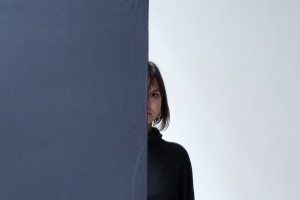The Tandem France-Romania
Is it still possible to compile a dossier, inevitably within a limited number of pages, on the contemporary art scene of such a complex and active, not to say ambitious, cultural space as it is the case with France? A space that functions fully on the state of “cultural exception” which turns art production into an important vehicle of France’s European and international strength?
In a world with globalized aesthetic tendencies, could it still be timely to try and define, even briefly, the profiles of artists, groups and movements that could highlight a tendency, a local specificity, one that would bring added value to the universal market of national cultures?
We believe so. Especially when referring to a country such as France, towards which we, Romanians, exercised an enduring cultural fascination. We believe it is worthwhile, at least once in a couple of decades, to put together useful if not relevant information on several artists, groups or visual phenomena that could hint from the smaller scale, specific to the format of an art magazine, that which is happening on a much wider scale – things that give consistency and ground to France’s current cultural strength.
In our dossier, you will find texts about artists such as Pierre Huyghe or Marc Desgrandchamps, about groups known as Supports/Surfaces, about powerful artists such as Tania Mouraud, Apolonia Sokol or Sophie Zenon, about artists who are building themselves a name such as Julien Previeux, Giroud et Siboni, Katinca Bock and Marie Voignier or emerging artists; you will also find interviews with critics, gallerists, exhibitions and book reviews, texts about new trends, and on the progressive return to painting and the figurative after decades in which French art suffered from the “terror of displaying the slightest national feature” (Catherine Millet).
For sure, our intention was to host within our own pages, articles devoted to established artists such as Bertrand Lavier, Bernard Venet, Gloria Friedmann, Eric Rondepierre, Jean-Pierre Raynaud, Vincent Bioulès, Simon Hantai, François Morellet, Bernard Dufour, Gilles Barbier; we would have liked to submit cameos of a number of famous women artists such as Sophie Calle, Annette Messager, Tatiana Trouvé or Camille Henrot; we wanted to be in possession of more information on photography and video. Limited space and other constraints have conditioned our selections, but I think what you will most definitely find in the following pages is a significant sample of today’s visual production in France, too rich and diverse to become easily estimated.
A considerable part of the magazine is dedicated to the exhibitions of Romanian artists in France within the generous format enabled by the Franco-Romanian Season lasting from November to July 2019. What emerges from this selection is the emphasis placed on the experimental, avant-garde dimension of a series of Romanian artists – starting with Brâncuşi to Victor Brauner, to Ion Grigorescu, Geta Brătescu or Ana Lupaş and arriving at the likes of Dan Perjovschi or Mircea Cantor – all of whom challenged and innovated French and Western modernity throughout the 20th century and to this day.
Compiled in tandem with the artpress magazine in Paris, which, in its turn, devoted a dossier on Romanian visual arts in its February issue, this present issue of ARTA magazine took shape during the France-Romania Season 2019 and benefited from the generous support of the French Institute in Bucharest. We take this occasion to express our gratitude.
Magda Cârneci, Editor-in-chief
POSTED BY
Cristina Bogdan
Founder and editor-in-chief, between 2014-19, of the online edition of Revista ARTA. Co-founder of East Art Mags, a network of contemporary art magazines from eastern and Central Europe. Runs ODD, a s...
www.evenweb.org